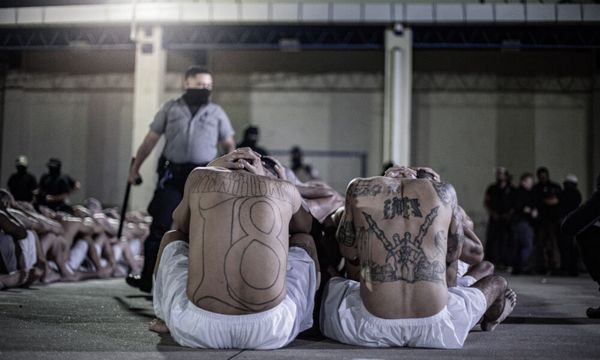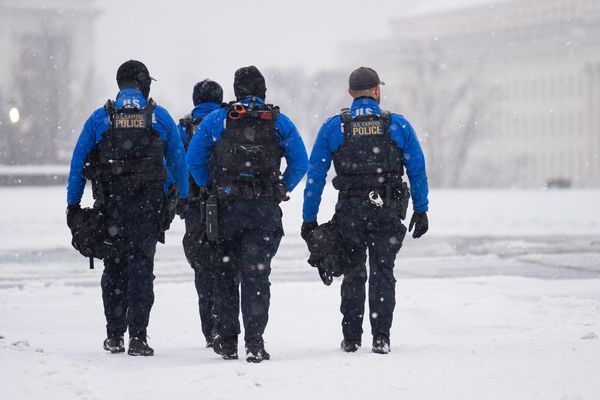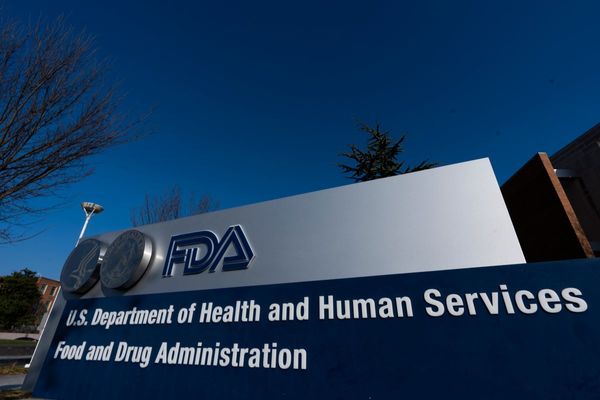Patrick Orque distinctly remembers hanging out with a friend late one night, just after new year’s 2020, when they heard gunshots.
They were in his friend’s front yard, in Orque’s home town of Delano, an agricultural community deep within California’s central valley. The nearby Mexican restaurants and markets had closed up, and the town was quiet, as it often is at night, enveloped in a still expanse of vineyards and citrus groves.
“We heard the ‘pew, pew, pew,’” he recalled. “And then we just went back to what we were doing.”
Not long after, he learned that a 19-year-old college student had been killed. He remembered her from high school.
“That’s just how it is in Delano. It’s sad to say, but it’s regular.”
Later that month, a local pastor’s 21-year-old son was killed in a drive-by shooting, while he was attending a friend’s memorial service. In the spring, a 15-year-old high school football player was shot, and his body was found in a field, amid the budding vines of table grapes just outside town. In the summer, two young girls – 11 and 12 years old – were gunned down at a birthday party.
And then, the following winter, it was Orque’s 45-year-old mother, Christina Armendariz, who got hit – she was killed in a drive-by shooting.
“You just don’t realise how messed up it is when you’re living in it,” Orque said.
Kern county, the rural county north of Los Angeles that encompasses Delano, had the highest gun homicide rate in California per capita between 2016 and 2021, according to the California department of public health. At 9.1 deaths per 100,000 people, the rate was double the statewide average of 3.8. Though urban areas like Los Angeles may see more shootings overall, across California, rural towns like Delano have proportionally much higher rates of gun deaths.
San Joaquin and Fresno counties – which also fall within the central valley, ranked second and third – followed by other agricultural counties along the state’s coast. Overall, two-thirds of California’s gun homicides have occurred in the state’s rural and semi-rural communities, according to an analysis by the violence prevention non-profit Hope and Heal Fund.
“People tend to talk a lot about gun violence in big cities,” said Juan Avila, the chief operating officer of Garden Pathways, a community-based violence interruption and mentorship program. “But a lot of our rural areas are ignored.”
In Delano, local leaders and victims’ families have long been trying to piece together what is driving all the violence, and what can be done to stop it. Some have pointed to the ubiquity of prisons in the sprawling region – Delano is surrounded by three correctional facilities – and the prevalence of prison and street gangs. Others have blamed a lack of police enforcement, or a lack of jobs and resources.
Growing up, there was a lack of opportunity, Orque said. “It’s either the streets or the fields – there’s nothing else to do.”
***
Orque’s mother, Christina, used to work in those fields, picking table grapes, like generations before her. His grandfather was involved in the Delano grape strikes and boycott in the 1960s – one of the largest farm worker mobilisation efforts in history, which led to the creation of the United Farm Workers union. The local park is named after Cesar Chavez, the labour activist who led the boycotts, along with Larry Itliong and other Latino and Filipino farm workers.
Acres upon acres of vineyards and citrus groves radiate out from town, which is centred around the Wonderful Company’s mandarin orange packaging plant. Though many in town work at the nearby correctional facilities, or in oilfields to the south, or at one of the many logistics warehouses propping up nearby – agriculture remains the major industry.
Almost everyone in Delano has either worked in the fields, or has friends or family who have.
“People don’t only know each other from growing up and going to school with each other or being neighbours. You also have to consider that they’re working with each other in the fields,” said Avila. Though nearly 51,000 people live here – making it the second largest town in Kern county, and the eighth fastest-growing city – it remains the sort of place where people really know each other.
When someone is killed, chances are high that most longtime residents know the victim, and maybe even the perpetrator. “Just think how disruptive just one homicide is for a small community,” he said.
Since 2020, there have been 53 shootings in Delano and 16 gun homicides, according to the local police department’s records.
Each death weighs on Crystal Medrano, 32. Armendariz was one of her best friends, and her other closest friend was killed in a drive-by shooting in 2016. “When I flip through my high school yearbook, it feels like everyone I knew is either in prison or dead,” she said.
Now Medrano – like many others in town reeling from loss – says she lives in a constant state of vigilance. She has enrolled her three kids – two sons, aged 16 and 12, and a nine-year-old daughter – in practically every sport and after-school activity, so they’re never left alone or unsupervised. “I tell my kids now: ‘Watch your surroundings. Stick together,’” she said.
Still, she hasn’t entirely been able to shield them. When her daughter was six, the girl’s 12-year-old cousin was shot and killed. “She wanted to know why it happened,” Medrano said. Medrano didn’t know how to explain.
“When you go to the park, or you go to the theatre – anywhere – you just don’t feel safe,” said Lisa Cantu, 54, whose son Juan Luis was shot and killed in May last year. A rancher found his body in the countryside, just outside the city limits. “They threw my son like a dog out there,” Cantu said. “Nobody deserves that.”
He was 26, and the youngest of his three daughters – Lisa’s grandchildren – was only 12 days old when he died. Since then, Lisa said, she hardly leaves her house. She scans the surroundings when she’s filling up her gas tank or visiting her son’s grave. “My daughter-in-law, she hardly lets the girls go anywhere,” Cantu said. “I’m angry – very angry. And I’m sad and depressed. I miss my son and I don’t feel safe.”
Often, she isn’t sure who to blame, she said. The shooter, of course. But also the police department, which still hasn’t found or arrested the killer. And herself, for not telling her son to be more careful, to make himself scarce and stay out of trouble. And also the town itself – where violence has been ever present for years.
***
Police in Delano have classified the majority of the shootings and homicides in the past few years as gang-related. Many residents, too, point to local gangs as either a source or a symptom of their troubles.
The town, longtime residents said, is situated at the edge of territories controlled by the Norteños and Sureños gangs – groups of mostly Mexican American young men who claim loyalties to their northern or southern California roots, respectively.
While most of Delano is Norteño territory, residents said, the town bleeds into Sureño turf at some point, among the fields of citrus trees along the town’s southern border with neighbouring McFarland.
Generations of some families here have claimed affiliation with one group or the other – or clung on to an uneasy neutrality. Residents said they were unnerved daily by errant graffiti announcing the gangs’ presence, or the Aztec eagle bumper stickers on a pickup truck that could signal support for the United Farm Workers – or for the Norteños, who have co-opted the logo.
Police also point at the proximity of two major prisons, Kern Valley and North Kern. Gang members inside the prisons have foot soldiers on the outside coordinating with street groups, police believe. “They have generals. They have a hierarchy, just like the military,” said Delano’s chief of police, Jerry Nicholson.
But community violence experts are sceptical, in part because blatant drive-bys in broad daylight run counter to the goals of high-level gangs. “Usually, prison gangs like to keep a low profile,” said Cuco Rodriguez, the chief strategist at Hope and Heal Fund, which developed a report in 2021 investigating the drivers of violence in Delano and possible solutions.
Rodriguez suspects that in Delano, just like in so many other parts of the central valley, the street gangs are nothing but loosely affiliated groups that claim loyalties, made up of young people seeking community and support in an area where those things are otherwise scarce.
“To just blame the gangs – I think that’s the stupid, easy answer,” he said. “But if you arrest every gang member, would that end the violence? Probably not.”
It’s also unclear where shooters are getting their guns. Many, the police department said, are stolen or unregistered. Between January 2022 and May 2024, the department confiscated 50 unregistered firearms and six stolen guns, it said. “Oftentimes, they are either stolen, or they’re ghost guns,” said Christopher Niño, an administrative commander with the Delano police, referring to homemade weapons that are untraceable. “But sometimes there’s no firearm recovered after a shooting,” he said. Nino said it was unclear where most of these guns were sourced.
Like many police departments across the US, the Delano police department’s list of unsolved homicide cases is growing. Victims’ families blame the department for failing to dedicate enough resources to bring justice. The police chief and local leaders say that solving such cases is exceedingly difficult, in part because community members are wary of attracting more violence if they work with law enforcement.
“It’s still so much of a black box,” said Melissa Barragan, an assistant professor of sociology at Cal Poly Pomona who studies gun violence and the impacts of policing and incarceration in communities. Overall, there’s also very little research on why rural areas tend to have much higher rates of gun violence, not only in California, but across the US, she said.
“A lot of the gun violence studies we have are Chicago, LA and New York and Philadelphia,” she said. “We know there are very different dynamics in smaller cities and rural areas.”
***
Like many towns across the central valley, Delano has been shaped by inequities and struggle.
The Delano grape strikes in the 1960s reverberated across the US and helped launch the modern farm worker rights movement. But in the decades after, Delano remained trapped in a cycle of exploitation and neglect. For years, its fields were doused with paraquat, a highly toxic herbicide linked to Parkinson’s disease. Droughts and overuse constantly threaten the town’s water supply, and during the height of the coronavirus pandemic, one in five households struggled to pay their water bill.
About 20% of residents live below the poverty line, in a town that has been plagued with unemployment. Residents complain that there are not enough opportunities outside of nearby vineyards and citrus groves. Promises from decades past that the construction of prisons near town would bring in jobs and prosperity never bore out.
And for decades, Delano has struggled to make do with less. Residents complain that there aren’t enough medical services or ambulances to go around. Neither of the two hospitals in Delano have a trauma care centre, so the victims of gun violence here are regularly airlifted to bigger cities.
Mental health services, too, are scant. Kern county and other central valley communities have some of the lowest concentrations of psychologists and social workers in California.
Victims and their families often feel like there is nowhere for them to turn. “It’s like we don’t know who to trust or where to go,” Orque said. “We don’t talk about it, we don’t go to therapy or anything. We just deal with it.”
Orque said he had spent his entire childhood keeping his head down, trying to stay out of trouble. He signed up for football, basketball and track to keep busy after school. “I never even got a parking ticket,” he said.
But it felt impossible to escape the culture of violence, or the sense he was trapped in a powder keg.
He was 20 when his mother was shot – and he suddenly became responsible for his younger brother. He had to arrange for a funeral and figure out what to do with all of his mother’s things and how to make enough money to support his family. “I was lucky I had other family to help,” he said.
His uncle helped get him a job at the oil fields – and though the work was backbreaking, it paid very well. He earned enough to afford a place in nearby Bakersfield for him and his younger brother. “Delano didn’t feel like home any more,” he said. “And as soon as I left I got a bird’s eye view of how dangerous it was.”
Once he left, he said, “it felt like I was finally free”.
Shortly before his mother died, Orque and a friend had started a streetwear brand called From the Mud – “because we’ve come from the mud – from the struggle”, he said. One of their T-shirts is an ode to the Delano grape strikes.
Another, dedicated to Orque’s mother, portrays a woman and her young son at the corner of Sixth Avenue and Ellington Street in Delano, across from the M & L Market. There’s a fire in the background, and a man pushes an ice cream cart near a caution-taped crime scene. In the foreground, two men have aimed their guns at each other.







